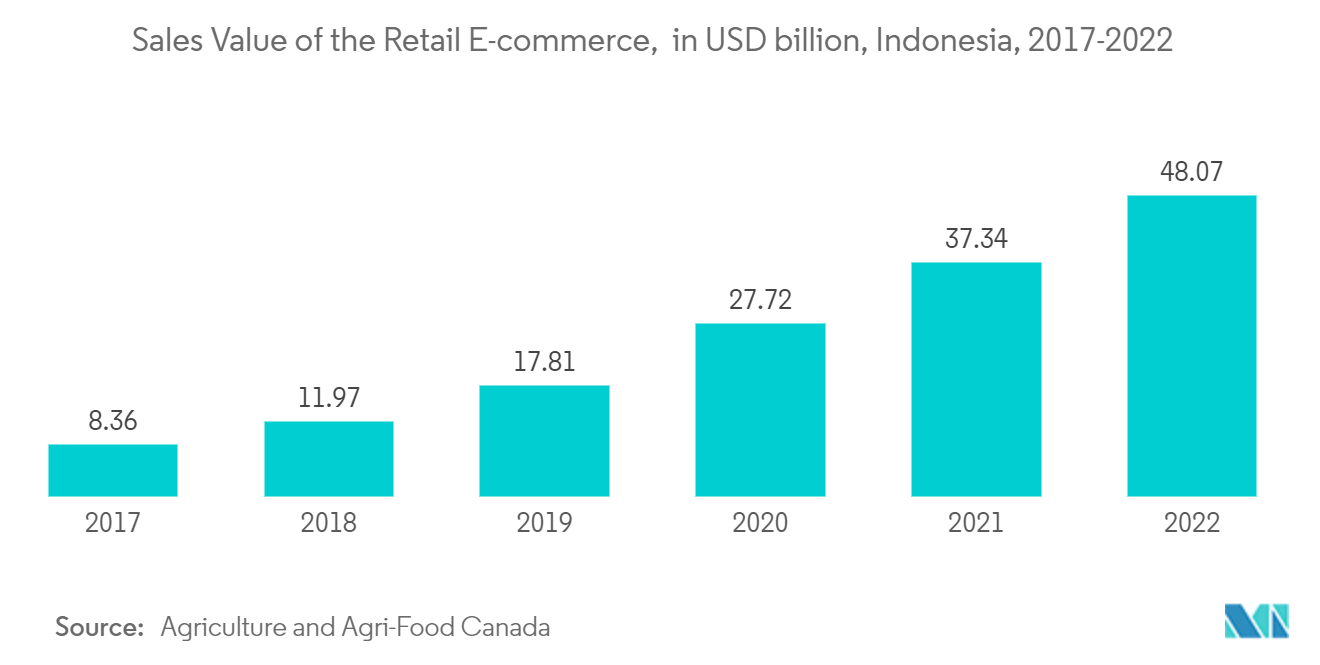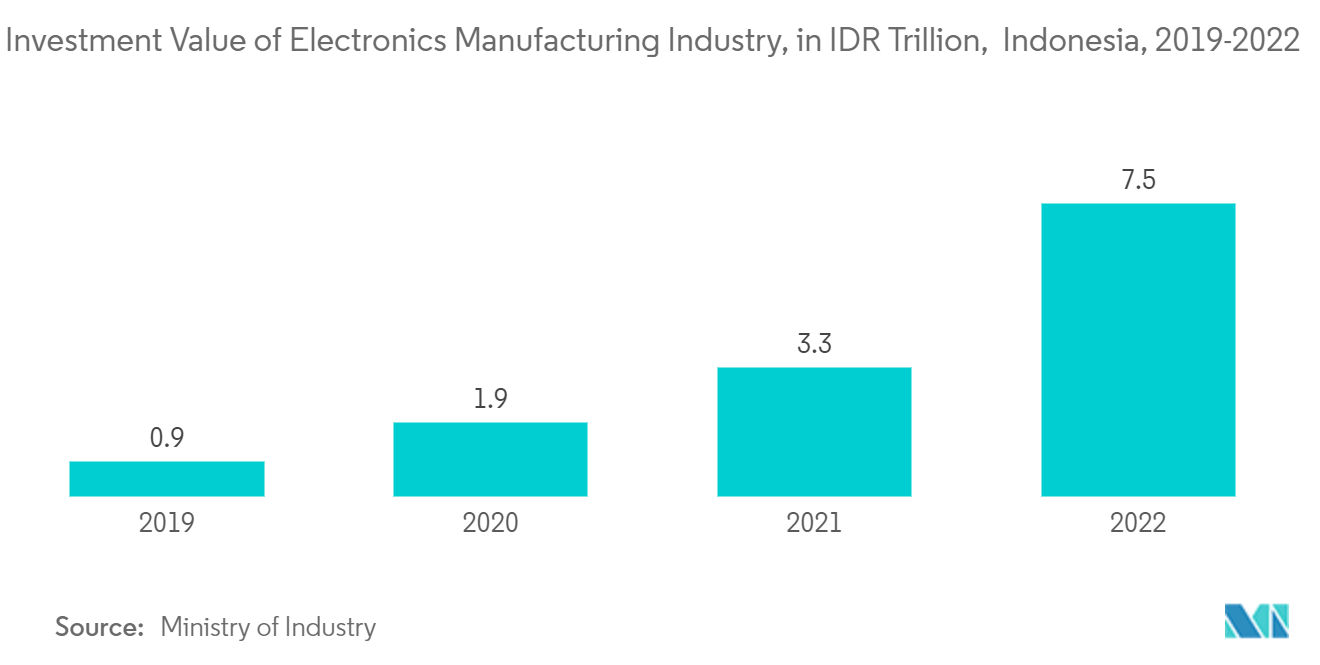Market Trends of Indonesia Plastics Industry
Growing Demand from the Packaging Industry
- The primary utilization of plastics is in the packaging segment due to better wear and chemical resistance, ease of molding, recyclability, puncture resistance, and high mechanical strength. Furthermore, polyethylene terephthalate (PET) is Indonesia's most common plastic used for packaging purposes.
- Plastics are more commonly used in the food, retail, and pharmaceutical sectors for packaging goods due to their properties, such as portability, design flexibility, ease of cleaning, lightweight, and protection against moisture over other materials. In addition, low handling hazards, low toxicity, and the absence of bisphenol A (BPA) and heavy metals are other factors that allow PET to be used for food packaging.
- In the pharmaceutical industry, plastics are commonly used for packaging blood bags, syringes, nebulizers, and medicine bottles. Furthermore, the growing population in Indonesia is the main reason for pharmaceutical development, which has increased the consumption of plastics within the country.
- In Indonesia, the use of plastics for packaging goods is increasing in the e-commerce industry. For instance, according to Agriculture and Agri-Food Canada, the sales value of retail e-commerce in Indonesia was valued at USD 48.07 billion in 2022. It is forecasted to reach USD 90.47 billion in 2026.
- According to the United States Department of Agriculture, the retail sales value of packaged foods in Indonesia reached USD 37. 5 billion in 2022 and registered growth when compared to USD 33.4 billion in 2021. This trend, which shows the growing consumption of plastics in food packaging within the country, is expected to continue.
- Plastic materials play a crucial role in pharmaceutical packaging, offering qualities such as durability, flexibility, and the ability to maintain the integrity of medicines. Plastic bottles, blister packs, and vials are common examples.
- Plastic is commonly chosen for aseptic packaging due to its effective barrier properties, flexibility, lightweight nature, cost-effectiveness, transparency, reliability features, and ongoing innovations. However, there is an increased focus on developing sustainable alternatives to address environmental concerns associated with plastic waste.
- In a move to bolster the plastic industry, Lamipak, a prominent leader in delivering top-quality products and solutions for aseptic packaging, revealed its plans to build a second factory in Indonesia in May 2022, demonstrating a substantial investment of USD 160 million.
- The factors mentioned above are expected to have a considerable impact on Inodnesia's demand for plastic during the forecast period.

Injection Molding Technology to Dominate the Market
- In injection molding technology, the thermoplastic polymer is heated above its melting point and converted into a molten form of low viscosity. This molten plastic is then forced and injected into a mold of the desired shape to get the desired product.
- Injection molding technology is used to make the shape of simple or complex plastics such as helmets, bottle caps, and fans using thermoplastic polymers. It is also used for wire insulation, bottles, and cosmetics packaging.
- Injection molding is done using high-quality processing resins. It has several advantages: design flexibility, cost-effectiveness, fast manufacturing process, low labor costs, reasonable color control, and good product quality. In addition, this process is mostly capital-consuming, but it offers better and more accurate products than other technology types.
- The pharmaceutical industry's demand for injection molding is increasing since it is utilized to manufacture various medical equipment parts such as beakers, test tubes, caps, seals, closures, valves, syringes, and inhalers. Furthermore, according to the UN Comtrade, Indonesia spent approximately USD 1.51 billion on imported pharmaceutical products in 2022. This trend demonstrates future opportunities for injection molding technology in the pharmaceutical sector.
- Injection molding is more extensively used in the manufacturing of automotive parts such as door panels, bumpers, grilles, light housings, fenders, and other parts. According to the Organisation Internationale des Constructeurs d'Automobiles (OICA), Indonesia produced around 1.21 million units of vehicles in 2022, witnessing a growth rate of 37.5% as compared to the previous year.
- Furthermore, plastics play a crucial role in the electronics industry, serving as lightweight and durable materials for casings, enclosures, components, and connectors, providing insulation for wiring and circuit boards, contributing to the production of printed circuit boards (PCBs), facilitating packaging, creating displays and screens, enabling 3D printing of prototypes, and offering antistatic properties to prevent damage to electronic components.
- According to the Ministry of Industry, the investment value of the electronics manufacturing industry in Indonesia reached IDR 7.5 trillion (USD 0.48 billion) in 2022.
- Due to the factors mentioned above, the market studied is expected to have steady growth during the forecast period.


